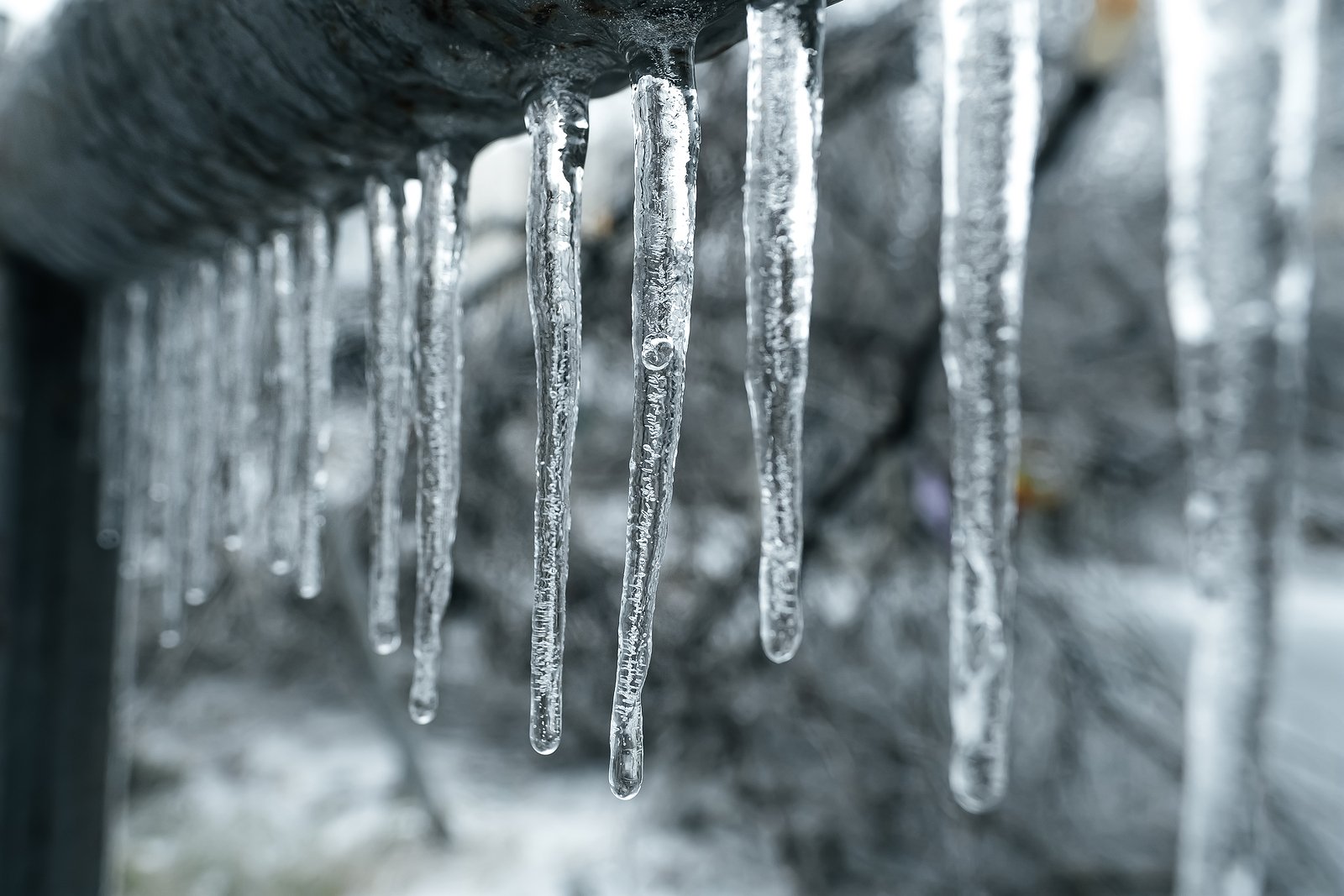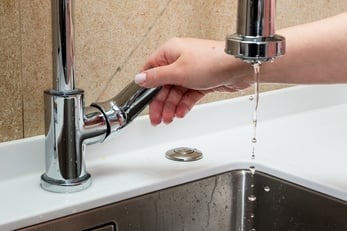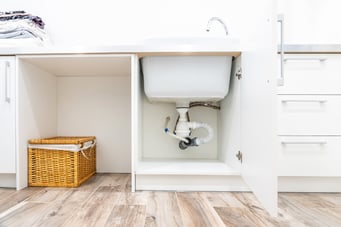
Snow, ice, sleet, rain, winds, and temperatures below freezing are all winter weather conditions that can range from just being a nuisance to posing serious dangers and safety hazards. One problem many homeowners find themselves dealing with during this season is frozen pipes. And although this is a common occurrence, there are several actions you can take to keep it from happening to your home or property. Read on to learn why this happens, prevention tips, and remedies in case you do experience a freeze.
Why Frozen Pipes Are a Problem
When water freezes, it expands. This expansion puts lots of pressure on whatever is containing it, including metal or plastic pipes. In pipes, the expanding can lead to ruptures—making frozen pipes not just inconvenient, but also very damaging to a home in the form of flooding and costly plumbing repairs. The pipes most likely to freeze are those that:
- Are exposed to severe cold, like outdoor hose spigots and water sprinkler lines
- Are in unheated indoor areas like basements, attics, garages, and kitchen cabinets
- Run against exterior walls that have little or no insulation
Tips for Preventing Frozen Pipes
Luckily, there are several things you can do to prevent pipes from freezing in the first place. Here are some tips:
Keep the Heat On
You may be tempted to lower your thermostat due to high heating costs, but think twice before you do. Blasting your heat during the day and turning it down at night isn’t good for your internal plumbing. You should try to keep the house at a more consistent temperature over a 24-hour period, leaving the thermostat set to the same or similar temperature both during the day and at night. Your heating bill might be higher, but remember, you’re preventing a much more costly repair job if pipes freeze and burst.
Moreover, if you’re going away and leaving your home unoccupied, don’t turn the heat off. You should leave it on and set it to a temperature no lower than 55° F.
Keep a Faucet Dripping 
When it’s very cold outside or you’re expecting freezing temperatures, let a little bit of water drip from one or two faucets served by exposed pipes. You don't need to do this with every single tap in your house, of course. But running water through the more vulnerable pipes, even at just a trickle, can be helpful. The constant movement of water through the pipes will go a long way in preventing a freeze and will also relieve any potential pressure buildup that can cause a burst.
Leave Cabinets Open
It may look odd, but open the doors of any vanity, cabinet, closet, or pantry to let warm air reach the typically colder pipes that live under sinks and in closed-off rooms. You’ll find that the plumbing in need of warmer circulating air is usually in your kitchen and bathrooms. Just be sure to keep any harmful cleaners and household chemicals out of the reach of children and pets. And if you have rooms that run colder in the winter, you should also keep the doors to those spaces open and set up fans around the house to blow the warmer air around.
Insulate Your Pipes
Pipe insulation is fairly inexpensive and can save you lots of money in the long run when it comes to preventing pipes from freezing. Again, you’re advised to focus on the most vulnerable pipes in your home: the exterior pipes and those located in unheated areas like the attic or basement. If the cold weather is on the way and you haven’t had time to properly insulate, you can try the DIY approach in a pinch—wrapping pipes in about ¼ of an inch of newspaper!
Plug Gaps Around Windows and Doors
Ahead of the freezing temperatures, it would benefit you to check around your house for any holes or gaps that need to be filled in order to keep warm air from escaping this winter. Pay special attention to windows and doors, which are notorious for leaving cracks and spaces that let cold air inside.
What to Do if Your Pipes Freeze
If you realize you have a frozen pipe, what do you do? There are some tricks you can try to get it thawed on your own before it develops into a bigger issue (like a burst). Here are a few things that might help safely melt your pipes:
- Wrap heating cables around your pipes. They look like long extension cords, and you will be able to wrap them around all of your exposed pipes. It can also be helpful to leave them plugged in during freezing conditions.
- Use a hair dryer to get the water flowing again. This trick doesn’t always work, especially on larger pipes, but if your kitchen or bathroom sink isn’t working, try taking out a hairdryer.
- Plug in your portable space heater right next to the frozen pipe. Be sure not to leave the heater unattended or near anything flammable.
- Apply heat with a heating pad or towels soaked in hot water. If you still cannot get the pipes to unfreeze, you may need to call a plumber.
The first step to protecting yourself and your property from any incident involving your house is to ensure you purchase adequate homeowner's insurance. Contact World Insurance Associates to review your current policy or inquire about coverage.
This article is not intended to be exhaustive, nor should any discussion or opinions be construed as legal advice. Readers should contact legal counsel or an insurance professional for appropriate advice.
GET STARTED WITH A FREE CONSULTATION
Creating a custom insurance or benefits package is critical for companies of all sizes.